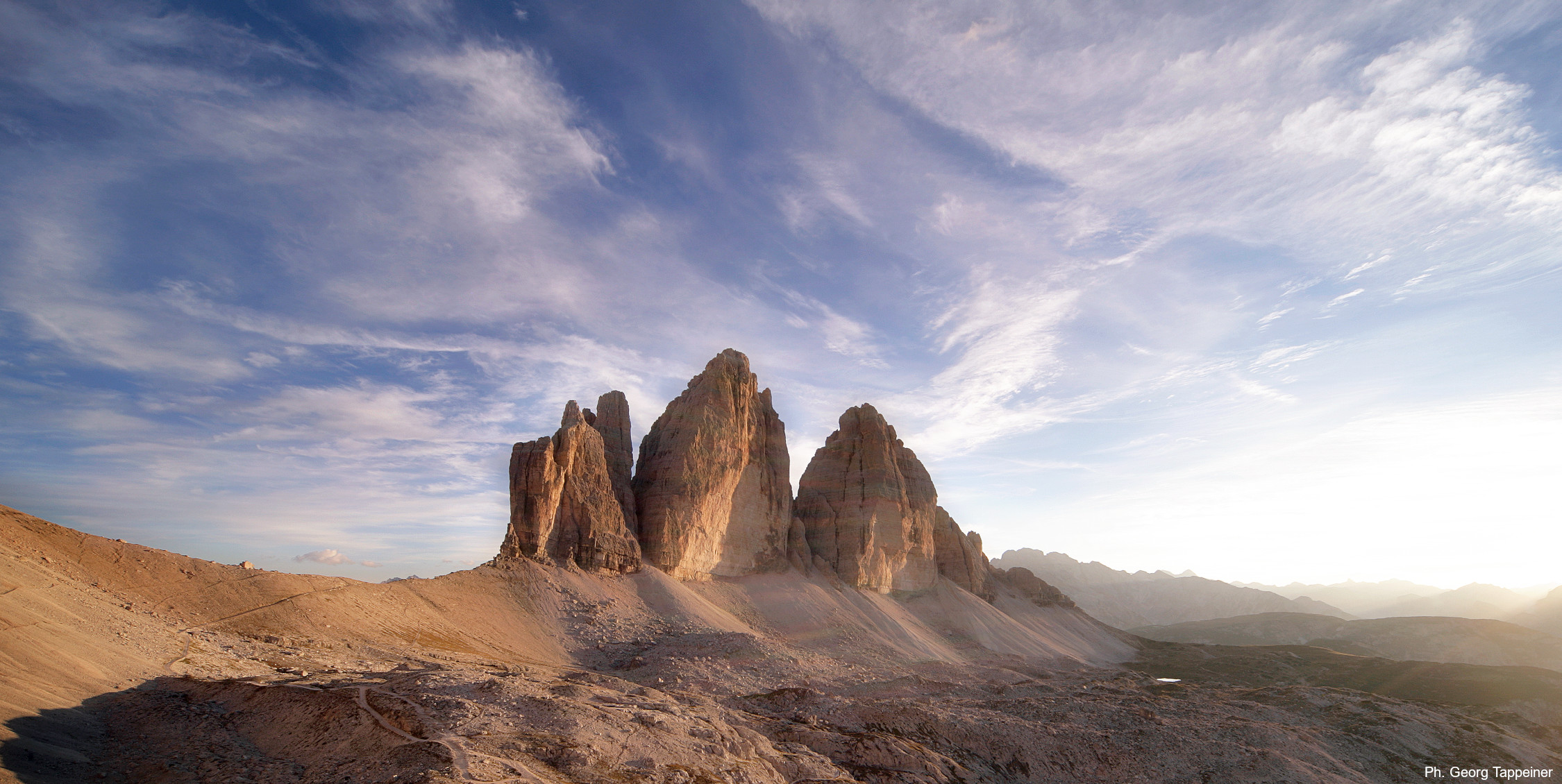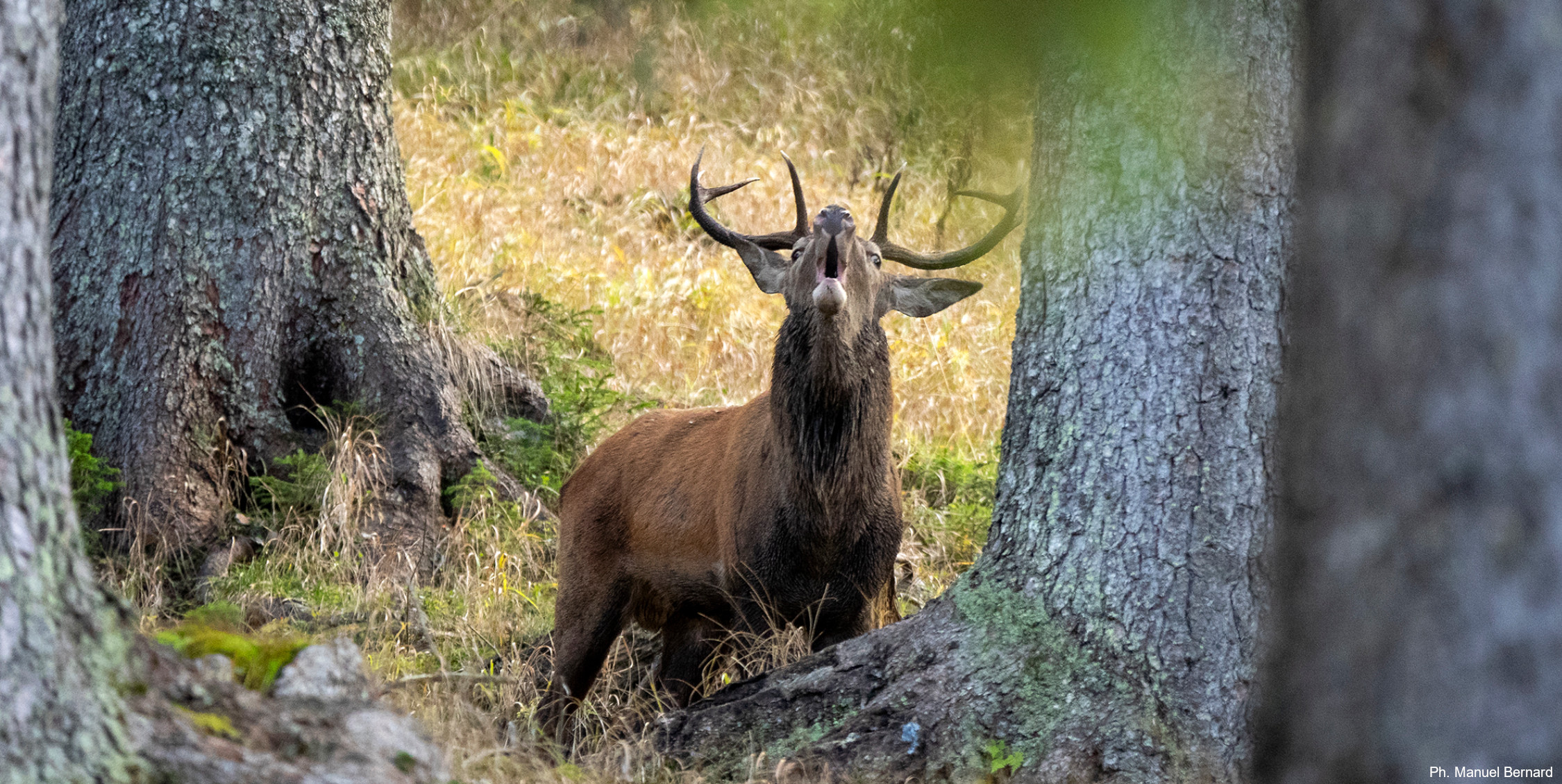In 2013, the UNESCO Dolomites Foundation commissioned journalist Piero Badaloni to make a documentary about the Dolomites, treating the area as a single entity, as UNESCO has recognised it, thus avoiding the territorial divisions imposed prior to its listing on 26 June 2009. “Dolomiti. Montagne – Uomini – Storie” [The Dolomites. Mountains, people and their stories] is a six-part journey unveiling the extraordinary landscape of the Pale Mountains and their starring role in the history of Planet Earth. These are the stories of the men and women who live and have lived here over the centuries, shaping the landscape, the economy and the culture. Piero Badaloni completed that journey with the help of Fausta Slanzi, and photography and editing by Nicola Berti.
The archipelago is born
Inevitably we start at the beginning, with the slow, lengthy gestation of the Pale Mountains: 280 million years of volcanic eruptions, mass extinctions, atolls in the sea, rain forests and long glaciation periods. The first episode in Badaloni’s documentary, “La nascita dell’arcipelago” [The archipelago is born], tells the story of crazed mineral hunters, murders unsolved for centuries, ancient human remains and long-gone reptiles. The story of the Dolomites is full of contrasts still visible in these pale peaks and rolling woodlands, a landscape unique in the world. But this is a story without an end as these amazing mountains are still evolving, their silhouettes transformed by landslides and erosion caused by the weather, the glaciers are retreating and water is still carving out labyrinthine subterranean tunnels in the bowels of the mountains.
From discovery to conquest
The first outsiders to discover the Dolomites were the geologists and biologists of the first half of the 19th century who were dazzled by the amazing riches of what is now a World Heritage Site. After the scientists, came the mountaineers, spurred on by a whole host of British travellers’ tales. “Dalla scoperta alla conquista” [From discovery to conquest] recounts that singular longing to stand atop the Dolomite peaks. British, German, Austrian and Italian climbers vied with each other at altitude while the inhabitants of the valleys struggled to scrape a living out of these mountains. This thirst to reach the summit is a modern fad, in the past the mountain tops were cold-shouldered by the locals and while some may have ventured there on the trail of a chamois, no traces remain of such endeavours. However, before long their knowledge of the territory gifted these mountain folk the chance to shake off their poverty, becoming the first mountain guides, and over the decades, they too caught the mountaineering bug.
The allure of the sublime
It is no surprise that the Dolomites became world famous in the 19th century. To the British and Germans the Pale Mountains seemed the perfect embodiment of the ideals of the Romantic age. Theirs is a disquieting, rather than a reassuring beauty: “Il fascino del sublime” [The allure of the sublime] takes a stroll through the works of art inspired by the Dolomites. The Marmarole peaks were possibly the inspiration for the “Presentation of the Blessed Virgin Mary” by Titian, then there is the Michelangelo of wood, the wooden toys from Val Gardena, St Michael’s in California, the woodland house where Mahler composed his music, Cortina with its coterie of intellectuals, film, photography etc.
The natural environment and its protection
The Dolomites are still a paradise for flora and fauna, an ecosystem boasting no fewer than 2,400 plant species. From such wild animals as the bear to the lovely edelweiss flower, the natural treasure trove that is the Dolomites is protected by 9 park authorities and the institution known as Le Regole. Le Regole is an ancient system for the collective management of natural resources that are inevitably more limited in mountain areas, and it still thrives today. The people of the Dolomites have always been conscious of the need for great care and thrift in the management of such priceless resources as woodlands, meadows, animals and water, and the Vajont disaster is an example of what can happen when human beings turn a deaf ear to the mountains. “L’ambiente naturale e la sua tutela” [The natural environment and its protection] tells this whole story, and much more besides, the return of young people to highland farming, Stradivarius violins, Alpine lakes, the wood grouse, and the UNESCO Dolomites Foundation’s commitment to protecting a heritage that belongs to the entire human species.
The inhabitants of the archipelago
“Gli abitanti dell’arcipelago” [The inhabitants of the archipelago] is dedicated to those who live their sometimes tough lives in the Dolomites. It tells of Ladinia, a place that does not exist on any maps, but that has, for centuries, been the homeland of many of those who live, get married, have children, work and play among these Pale Mountains. The film also shows the riotous Carnival time when the people parade in their traditional wooden masks. A tenacious language and culture that strengthens with the passing of time, homes and modes of living put to test by the cold and the solitude, deep-seated religious beliefs and horrific witch-hunts. The dolomitic landscape is living proof of human interaction with the natural world, a centuries-old lesson in survival at dizzying heights. Among legends and superstitions, emigration and traditional crafts, the story of the Dolomites is, above all, the story of the Pale Mountain folk.
From the past to the future
The changing relationship between the mountains and their inhabitants over time is the subject of the last instalment, “Dal passato al futuro” [From the past to the future]. The 20th century marked dramatic changes for the Dolomites, from the destruction of the Great World War to the advent of mass tourism in the wake of the motorcar, the 1956 Winter Olympics and the new fashion for skiing, the Giro d’Italia and the passion for cycling, the proliferation of mountain refuges and, of course, the traffic problems. Despite all these upheavals, the people of the Dolomites have managed to retain their identity and their bond with the land and, for all those who live there, the Dolomites remain a landscape of the soul.
A journey on TV and beyond
Since 2013, the six episodes have been shown on many different occasions and in many different settings. These include a variety of channels and audiences. The Rai Storia channel was the first Italian broadcaster to debut the six episodes in September 2014, with various subsequent repeats. In the months that followed, the documentary was aired on Rai International. Local television stations also included the six episodes in their programming: Tele Belluno in autumn 2015 and RTTR in winter 2015/2016.
Many different initiatives in local areas have used one or more episodes of the Documentary. There have been around forty presentations of episodes within cinematic cultural initiatives, evenings dedicated to the Dolomites World Heritage Site, events at mountain huts and festivals, often accompanied with presentations and discussions.
The journey around the UNESCO Dolomites also found an important platform at Expo Milano 2015. In collaboration with Intesa San Paolo, the six episodes of the documentary were shown for a whole day at “The Waterstone” pavilion.
The documentary also involved several secondary schools, including the Istituto Calvi in Belluno, and Liceo Filzi and Liceo Rosmini in Rovereto (Province of Trento). The six episodes, each exploring a different theme, offer a starting point for educational activities and foster discussion of topics such as protection and promotion of the Dolomites as a globally unique site.
The various initiatives have engaged a large and diverse audience, from tourists to residents, and TV broadcasts have also captured the interest of people who have never actually visited the Dolomites.
Those interested in further promoting and sharing the documentary at events organised for associations and schools, or simply purchasing the whole box set (six DVDs that cannot be purchased individually), can send a request for the attention of the Foundation’s secretary at info@dolomitiunesco.info.







